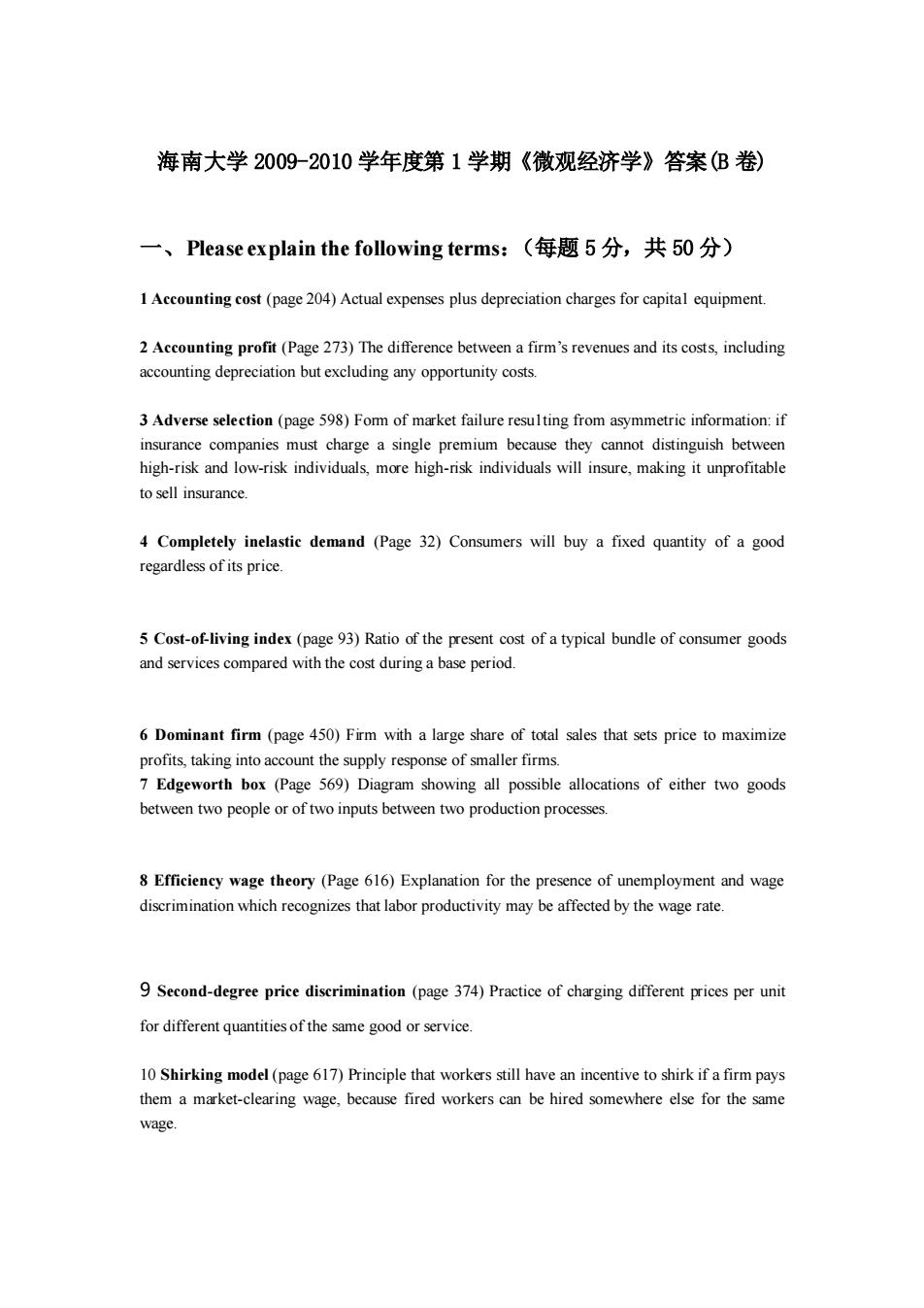正在加载图片...

海南大学20092010学年度第1学期《微观经济学》答案B卷) 一、Please explain the following terms:(每题5分,共50分) 1Accounting cost(page 204)Actual expenses plus depreciation charges for capital equipment. 2Accounting profit (Page 273)The difference between a firm's revenues and 3 Adverse selection(page 598)Fom of market failure resulting from asymmetric information:if insurance companies must charge a single premium because they cannot distinguish between high-risk and low-risk individuals,more high-risk individuals will insure.making it unprofitable to sell insurance. 4 Completely inelastie demand (Page 32)Consumers will buy a fixed quantity of a good regardless of its price. 5Cost-of-iving inde(page9)Ratio of the pesent cost of a typical bundle of consumer goods and services compared with the cost during a base period. 6Dominant firm (page 450)Fm with a large share of total sales that sets price to maximize taking in oaccount the supply response of smaller firms 7 Edgeworth box (Page 569)Diagram showing all possible allocations of either two goods between two people or of two inputs between two production processes. mployment and wage which that labor productivity may be affected by thewage rate. 9Second-degree price diserimimation (page 37)Practice of chaging different ices per uni for different quantitiesof the same goodorservice 10 Shirking model (page 617)Principle that workers still have an incentive to shirk if a firm pays them a market-clearing wage,because fired workers can be hired somewhere else for the same wagc.海南大学 2009-2010 学年度第 1 学期《微观经济学》答案(B 卷) 一、Please explain the following terms:(每题 5 分,共 50 分) 1 Accounting cost (page 204) Actual expenses plus depreciation charges for capita1 equipment. 2 Accounting profit (Page 273) The difference between a firm’s revenues and its costs, including accounting depreciation but excluding any opportunity costs. 3 Adverse selection (page 598) Form of market failure resu1ting from asymmetric information: if insurance companies must charge a single premium because they cannot distinguish between high-risk and low-risk individuals, more high-risk individuals will insure, making it unprofitable to sell insurance. 4 Completely inelastic demand (Page 32) Consumers will buy a fixed quantity of a good regardless of its price. 5 Cost-of-living index (page 93) Ratio of the present cost of a typical bundle of consumer goods and services compared with the cost during a base period. 6 Dominant firm (page 450) Firm with a large share of total sales that sets price to maximize profits, taking into account the supply response of smaller firms. 7 Edgeworth box (Page 569) Diagram showing all possible allocations of either two goods between two people or of two inputs between two production processes. 8 Efficiency wage theory (Page 616) Explanation for the presence of unemployment and wage discrimination which recognizes that labor productivity may be affected by the wage rate. 9 Second-degree price discrimination (page 374) Practice of charging different prices per unit for different quantities of the same good or service. 10 Shirking model (page 617) Principle that workers still have an incentive to shirk if a firm pays them a market-clearing wage, because fired workers can be hired somewhere else for the same wage